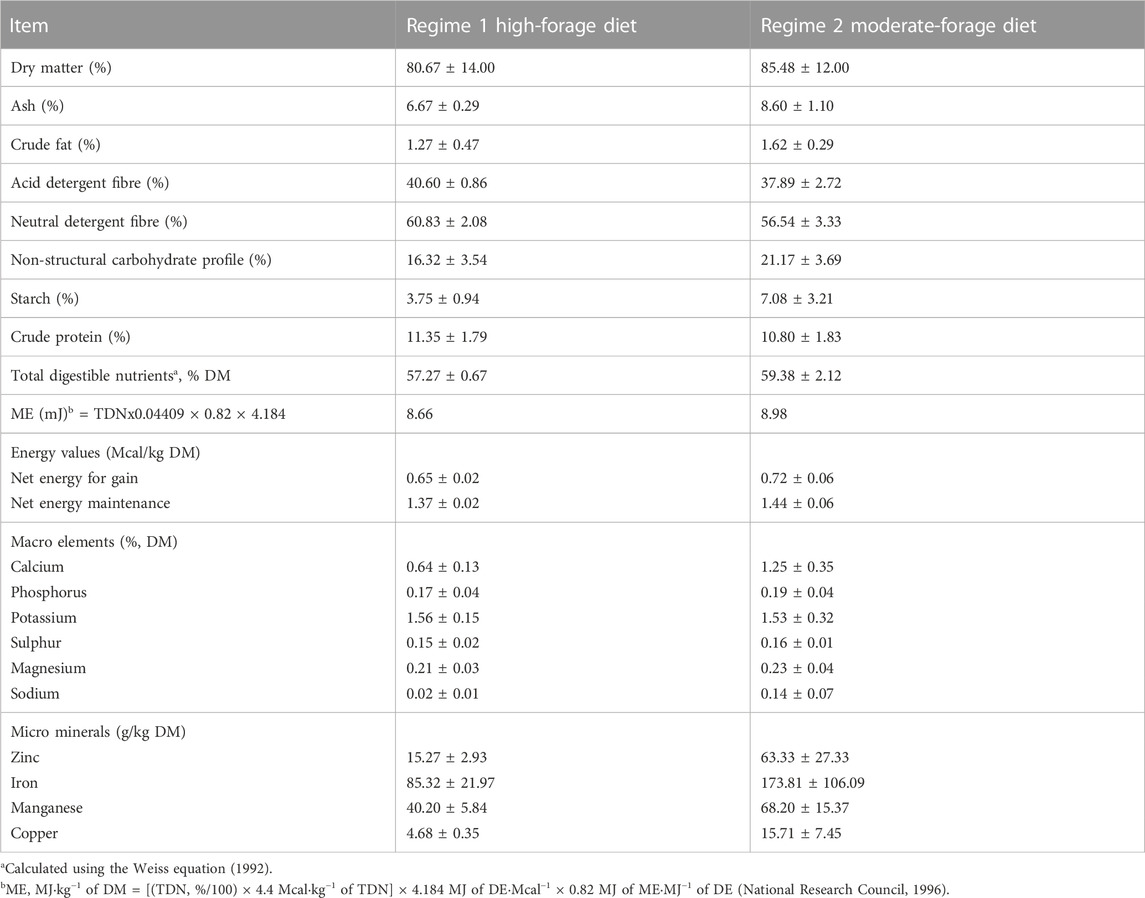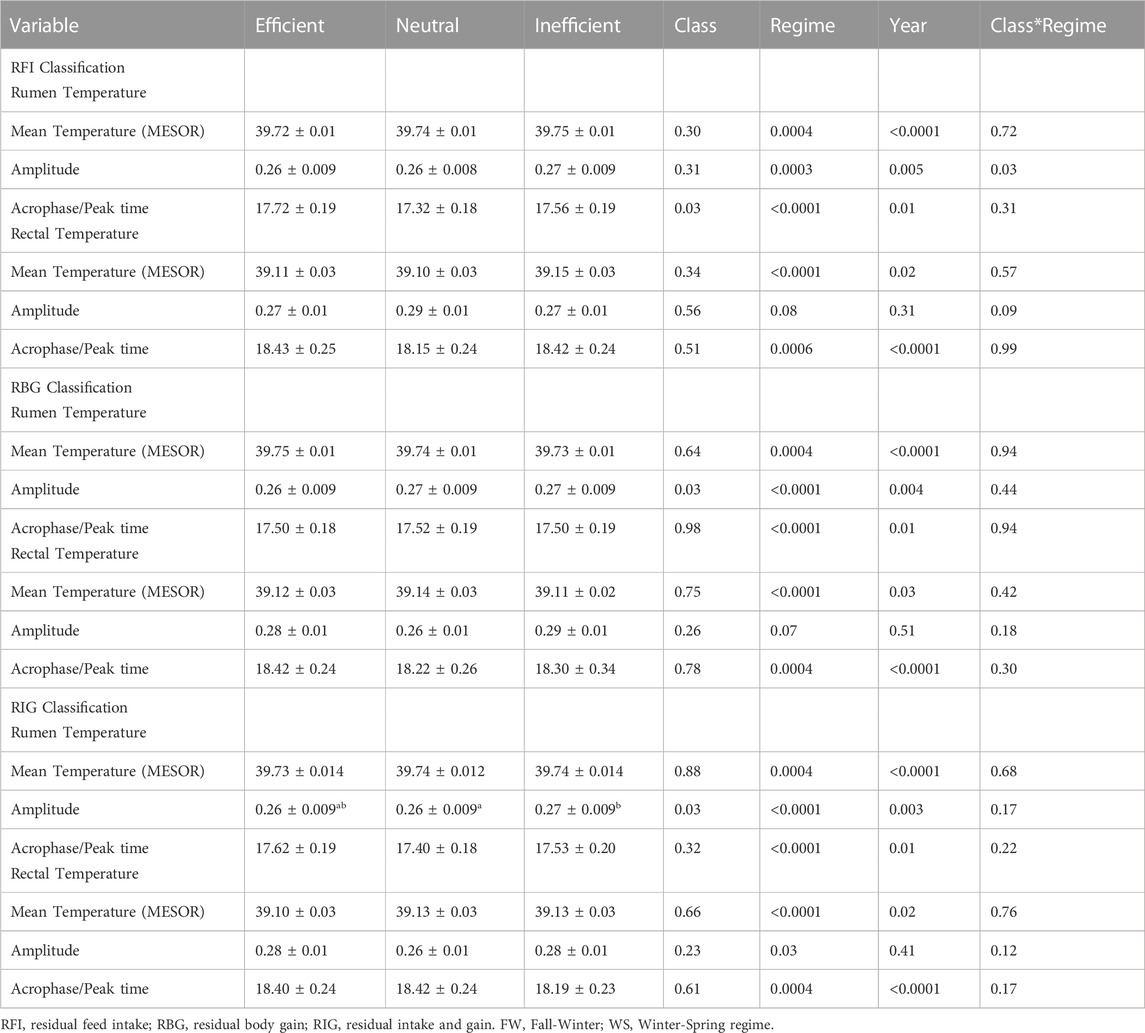- 1Department of Applied Research, Lakeland College, Vermilion, AB, Canada
- 2Department of Animal and Poultry Science, University of Saskatchewan, Saskatoon, SK, Canada
- 3USDA ARS Livestock Issues Research Unit, Lubbock, TX, United States
- 4Department of Agricultural and Resource Economics, University of Saskatchewan, Saskatoon, SK, Canada
- 5Department of Production Animal Health, Faculty of Veterinary Medicine, University of Calgary, Calgary, AB, Canada
- 6Australian Centre for Health Services Innovation and Centre for Healthcare Transformation, School of Public Health and Social Work, Faculty of Health, Queensland University of Technology, Kelvin Grove, QLD, Australia
- 7Animal Science and Aquaculture Department, Faculty of Agriculture, Dalhousie University, Halifax, NS, Canada
by Durunna O, Carroll JA, Dailey JW, Damiran D, Larson KA, Timsit E, Parsons R, Manafiazar G and Lardner HA (2023). Front. Genet. 14:1026601. doi: 10.3389/fgene.2023.1026601
In the published article, there was an error in the heading of column three of Table 1. The heading has been corrected to “Regime 2 moderate-forage diet.”

TABLE 1. Nutrient composition of diet fed to backgrounding steers during the Fall-Winter and Winter-Spring regimes over the 2 years of study.
In the published article, there was an error in the caption of Table 3. The caption has been corrected to “production efficiency-based production efficiency-based classification (LSmeans) and circadian parameters for rumen and rectal temperature parameters calculated within the two regimes.”

TABLE 3. Production efficiency-based production efficiency-based classification (LSmeans) and circadian parameters for rumen and rectal temperature parameters calculated within the two regimes.
In the published article, there was an error in the caption of Table 4. The caption has been corrected to “Heritability (±PSD) and some genetic parameters for circadian core body temperature parameters.”

TABLE 4. Heritability (±PSD) and some genetic parameters for circadian core body temperature parameters.
The corrected Tables 1, 3, 4 appear below.
A correction has been made to Results, Paragraph 3. This sentence previously stated:
“There was no regime-by-year interaction (p > 0.05) for the average age and weight at the initiation of the study, DMI, ADG, and for all temperature parameters except the acrophase of rumen MESOR (p < 0.0001). As expected, the DMI, MEI, and ADG were greater (p < 0.0001) in the WS compared to the FW.”
The corrected sentence appears below:
“There was no regime-by-year interaction (p > 0.05) for the average age and weight at the initiation of the study, DMI and for all temperature parameters except the acrophase of rumen MESOR (p < 0.0001). As expected, the DMI and MEI were greater (p < 0.0001) in the WS compared to the FW.”
A correction has been made to Results, Paragraph 4. This sentence previously stated:
“The rumen MESORs were 39.75°C, 39.65°C, 39.82°C, and 39.75°C, respectively, for Yr1 regime1, Yr1 regime2, Yr2 regime1, and Yr2 regime2.”
The corrected sentence appears below:
“The rumen MESORs were 39.75°C, 39.65°C, 39.82°C, and 39.75°C, respectively, for Yr1 FW, Yr1 MS, Yr2 FW, and Yr2 MS.”
A correction has been made to Results, Relationships among the traits and parameters within and between the two regimes, Paragraph 1. This sentence previously stated:
“Table 4 shows the correlations among production traits and rhythm-adjusted temperature parameters within each test-regime, and between the two regimes.”
The corrected sentence appears below:
“Figure 3 shows the correlations among production traits and rhythm-adjusted temperature parameters within each test-regime, and between the two regimes.”
A correction has been made to Results, Relationships among the traits and parameters within and between the two regimes, Paragraph 1. This sentence previously stated:
“Within the FW (above the diagonal), a strong positive correlation (p < 0.0001) was observed between the MESORs for rumen and rectal temperature (0.74) but was weaker (0.30; p = 0.02) and moderate between rumen amplitude and rectal amplitude (0.42). The MEI was moderately positively correlated with rumen MESOR (0.38) but weaker with rectal MESOR (0.21) during the FW.”
The corrected sentence appears below:
“Within the FW (above the diagonal), a strong positive correlation (p < 0.0001) was observed between the MESORs for rumen and rectal temperature (0.74) but was moderate between rumen amplitude and rectal amplitude (0.42; p < 0.001). The MEI was moderately positively correlated with rumen MESOR (0.38; p < 0.0001) but weaker with rectal MESOR (0.21; p < 0.10) during the FW.”
A correction has been made to Results, Relationships among the traits and parameters within and between the two regimes, Paragraph 2. This sentence previously stated:
“The correlations between both regimes (the diagonal in Figure 3) were moderately strong (p < 0.0001) for ruminal MESOR (0.58), stronger for rumen amplitude (0.85), but moderate (p > 0.60) for rectal MESOR (0.40), rectal amplitude (0.59), and rumen acrophase (0.63).”
The corrected sentence appears below:
“The correlations between both regimes (the diagonal in Figure 3) were moderately strong (p < 0.001) for ruminal MESOR (0.58), stronger for rumen amplitude (0.85), but moderate for rectal MESOR (0.40), rectal amplitude (0.59), and rumen acrophase (0.63).”
A correction has been made to Results, Genetic parameters for rhythm-adjusted core body temperature measures, Paragraph 1. This sentence previously stated:
“Even though there was no phenotypic correlation between both regimes for the rectal MESOR (0.03 ± 0.17), the phenotypic correlation between both regimes for the rumen temperature (0.63 ± 0.05) was moderately high, indicating appreciable predictability of performance from one regime to the other.”
The corrected sentence appears below:
“Even though there was no phenotypic correlation between both regimes for the rectal MESOR (0.03 ± 0.17), the phenotypic correlation between both regimes for the rumen MESOR (0.63 ± 0.05) was moderately high, indicating appreciable predictability of performance from one regime to the other.”
A correction has been made to Discussion, Paragraph 6. This sentence previously stated:
“The information about the relationships between data from automated or telemetric tools successively under typical feeding regimes and during the typical cold seasons and feeding environments will advance our knowledge of such tools.”
The corrected sentence appears below:
“The information about the relationships between data from automated or telemetric tools successively collected under typical feeding regimes and during the typical cold seasons and feeding environments will advance our knowledge of such tools.”
A correction has been made to Discussion, Paragraph 8. This sentence previously stated:
“We also demonstrated a strong correlation between RCT and RTMP.”
The corrected sentence appears below:
“We also demonstrated that a strong correlation existed between RCT and RTMP.”
A correction has been made to Discussion, Paragraph 12. This sentence previously stated:
“The high heritability estimates for the rumen and rectal temperature in the FW imply that direct selection based on the MESOR phenotypes will result in faster genetic progress of associated traits if exploited in breeding programs.”
The corrected sentence appears below:
“Compared to the WS estimates, the high heritability estimates for the rumen and rectal temperature in the FW imply that direct selection based on the MESOR phenotypes will result in faster genetic progress of the associated traits if exploited in breeding programs.”
The authors apologize for this error and state that this does not change the scientific conclusion of the article in any way. The original article has been updated.
Publisher’s note
All claims expressed in this article are solely those of the authors and do not necessarily represent those of their affiliated organizations, or those of the publisher, the editors and the reviewers. Any product that may be evaluated in this article, or claim that may be made by its manufacturer, is not guaranteed or endorsed by the publisher.
Keywords: winter, core body temperature, reticulo-rumen, rectal, feed efficiency, telemetry, genetic parameters, multi-environment evaluations
Citation: Durunna O, Carroll JA, Dailey JW, Damiran D, Larson KA, Timsit E, Parsons R, Manafiazar G and Lardner HA (2023) Corrigendum: Phenotypic and genetic parameters of circadian rhythms from core body temperature profiles and their relationships with beef steers’ production efficiency profiles during successive winter feeding periods. Front. Genet. 14:1154825. doi: 10.3389/fgene.2023.1154825
Received: 31 January 2023; Accepted: 01 February 2023;
Published: 10 February 2023.
Approved by:
Frontiers Editorial Office, Frontiers Media SA, SwitzerlandCopyright © 2023 Durunna, Carroll, Dailey, Damiran, Larson, Timsit, Parsons, Manafiazar and Lardner. This is an open-access article distributed under the terms of the Creative Commons Attribution License (CC BY). The use, distribution or reproduction in other forums is permitted, provided the original author(s) and the copyright owner(s) are credited and that the original publication in this journal is cited, in accordance with accepted academic practice. No use, distribution or reproduction is permitted which does not comply with these terms.
*Correspondence: Obioha Durunna, T2Jpb2hhLkR1cnVubmFAbGFrZWxhbmRjb2xsZWdlLmNh
 Obioha Durunna
Obioha Durunna Jeffery A. Carroll
Jeffery A. Carroll Jeff W. Dailey3
Jeff W. Dailey3 Edouard Timsit
Edouard Timsit Rex Parsons
Rex Parsons Ghader Manafiazar
Ghader Manafiazar Herbert A. Lardner
Herbert A. Lardner